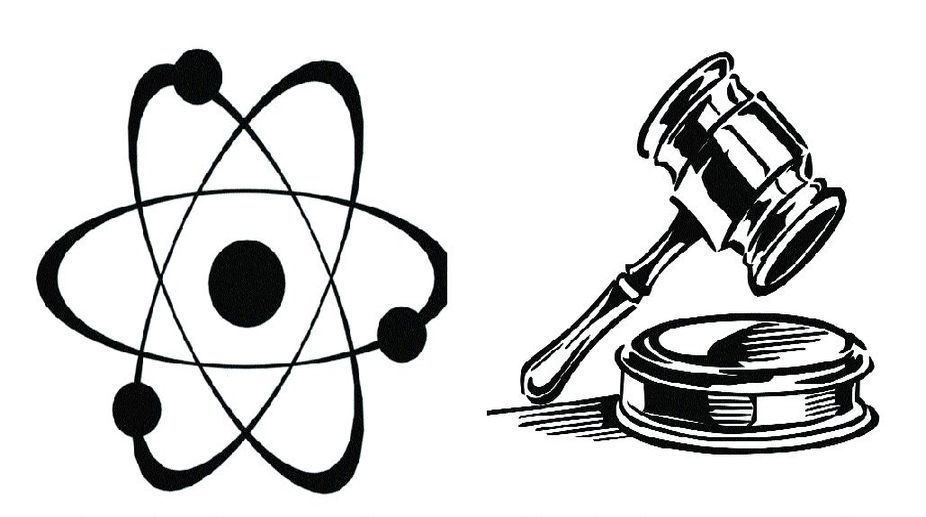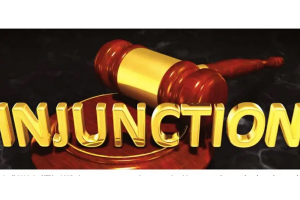It is interesting to compare the laws of physics and the laws followed in our legal system, especially in the criminal justice system, to see if there is an opportunity for physicists to apply their analytical skills to legal processes.
Apart from the word “law”, there are a few other similarities between how a physicist thinks and how a lawyer approaches a case.
In our legal systems (both in India and USA), ultimately it is the Constitution which spells out the fundamental “rules” that must be accepted without question, much like the laws of physics.
Then, to resolve a specific issue, one must derive other rules from the ones in the Constitution which are more relevant to the problem at hand.
A lawyer works backwards, meaning he/she examines the given case and then tries to relate it to some circumstances spelled out in the Constitution.
Physicists do the same thing in their approach in solving or explaining a given problem; they try to correlate the problem to something that could be explained by laws of physics.
In some rare cases, laws are amended to accommodate new issues which cannot be resolved in a satisfactory way by existing rules, just like some laws of physics are occasionally modified in order to explain new experimental results. An example of the latter would be the modification of Newtonian mechanics in order to include relativistic effects.
A legal case is built around evidence. There are all kinds of issues related to evidence: is it direct or circumstantial? Is there forensic evidence and what is its technical integrity? If a piece of evidence is based on people’s testimony, what are the assurances that it is not affected by personal bias, weak recollection, mistaken identity or just fabrication?
Similar situation arises in a physics investigation as well. Suppose that a number of physicists are summoned to explain the behavior of some erratic movements of a UFO. The first thing they would do is to collect evidence. How many times has there been a sighting?
How many people have seen this UFO? Are they consistent in their accounts of what they saw? Are they reliable witnesses? Did anyone take a photograph or a video of this moving object? Did anyone take any measurement, such as time of traverse across a certain segment of the sky or brightness?
Also, in both investigations there is value in simulating the behavior under investigation to find possible scenarios. In some sense, experimental physicists play the role of police detectives while theoretical physicists are the attorneys.
There are many important differences, however, between the working of our legal system and problem-solving by a physicist. First, the derivations necessary from the laws of physics to get any formula specific to individual events are always mathematical. In the legal system, on the other hand, they are entirely qualitative and subjective, relying heavily on “legal precedents”.
Secondly, in jury trials, the lawyers for opposing parties present their arguments, based on derivations and interpretations from existing laws and it is the jury which makes the final decision. The jury is supposed to be a neutral body, not necessarily expert about any of the laws that are being applied.
In a scientific investigation, there can be any number of groups researching to explain a given phenomenon and they can also come up with different arguments and deductions from the basic laws to assert if and how the phenomenon follows those laws.
However, in case of physics, it is not a group of non-experts but rather the overall expert peer group in the physics community that sides with one theory or the other.
Thirdly in the legal system intentional violation of laws is punished in some way and the penalty or punishment is subjective, depending on the judge. This puts an extra stress on everyone.
In a scientific investigation, the only issue is if the phenomenon under investigation is “real” in the sense that if it can be explained by science; the only pressure comes from the urgency of finding an explanation. If the phenomenon does not follow the laws of physics, we simply label it as “paranormal” or see anomaly in the data.
Nonetheless, I submit that the criminal justice system can be made more efficient and objective by using a physics-based approach.
While some cases are considered “open and shut”, meaning the analysis and determination of the guilty party is obvious, most cases are more complicated requiring intricate subjective reasoning based on various interpretations of the rules of law.
While the subjective interpretive reasoning cannot be formulated in mathematical ways, it seems to me that logic should be unique and hence quantifiable.
Criminal behavior can often be predictable and yet we spend millions just to start from ground zero assuming the “innocent until proven guilty” assertion and reach the same conclusion almost every time. It is like observing an apple fall from a tree and starting a new investigation as to why the apple fell every time someone sees an apple fall.
Here are some examples: i) in case of a suspicious murder of a married person the living spouse is the prime suspect; ii) a child molester will repeat his crime; iii) in case of a suspected financial fraud scheme, a person accumulating a huge amount of wealth in a short time is the guilty party;
iv) a woman accused of killing her children is mentally insane; v) an adult accused of killing his/her parents has inheritance as the motive; vi) more than two serious crimes within a short time-frame with similarities in the “M.O.” point to a serial criminal; vii) murder of a political figure has something to do with his/her political views and/or acts and so on.
While we cannot replace the entire legal process by a quantitative physics-based analysis, it seems conceivable that one could use reasoning of a physicist to establish certain algorithms and even formulate some software which could streamline the legal process and save the tax-payers substantial sums of money.
For example, one could input all the evidences, names of suspects and the relevant laws and let the software come up with a reasonable scenario, if not the guilty party. This should not be drastically different from using mathematical tools to come up with an explanation about the motion of the UFO from given information (evidence).
Clearly, we cannot derive mathematical formulas, but we can still establish databases from previous similar cases, list of evidences, arguments that were derived to present the cases etc. and links with major search engines like Google.
Then one can select a set of parameters to define the case, such as time and weapon of the crime, age and marital status of the victim, the harm or damage inflicted on the victim, financial status of the victim as well as suspects etc. This would then help us to postulate an empirical model of what happened.
In fact, this is precisely what the lawyers do already; my main point is that they do the same thing over and over again, starting from ground zero, even though similar crimes have been committed hundreds of time before. So, why not use a “standardised” algorithm to get a head-start in determining what happened?
Quantitative analytical tools can also be used to expedite some auxiliary processes. For example, getting a search warrant is a formidable task even when conventional wisdom points to a suspect; there has to be “reasonable cause” for the search and even then, deciding what is “reasonable” seems subjective.
I would be in favor of an automatic search warrant for any suspect who has been objectively singled out by “software”. Decisions regarding which evidence can be included also seems to be highly subjective. There should be an automatic process that makes this decision based on our legal system and given criteria.
The concept of a jury trial is not likely to change any time soon in the US. The part one can try to change is the sentencing phase. It seems that since the basic guideline for ranges of sentences for various crimes have already been established, there is no reason to waste time and money by holding hearings and letting a judge make a subjective decision about the exact punishment.
It makes more sense to quantify this decision-making by some mathematical process whereby one simply inputs the nature of crime and some related information so that the precise penalty is arrived at by an algorithm.
One fundamental problem in the USA and increasingly in India is that people are litigious, and we waste millions of dollars (or rupees) on various legal expenses. Perhaps physicists can make a social contribution by applying their analytical skills to streamline the process.
The writer, a physicist who worked in academia and industry, is a Bengali settled in America.











